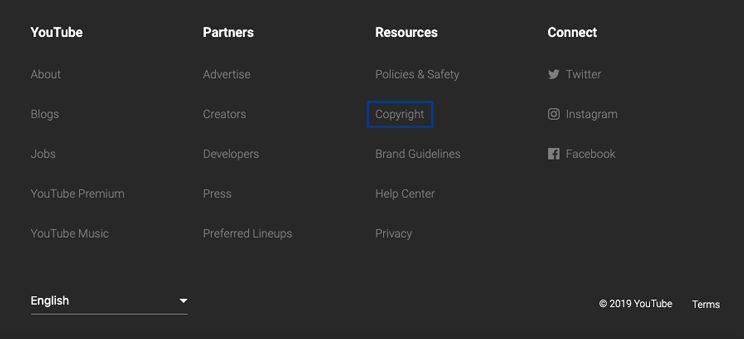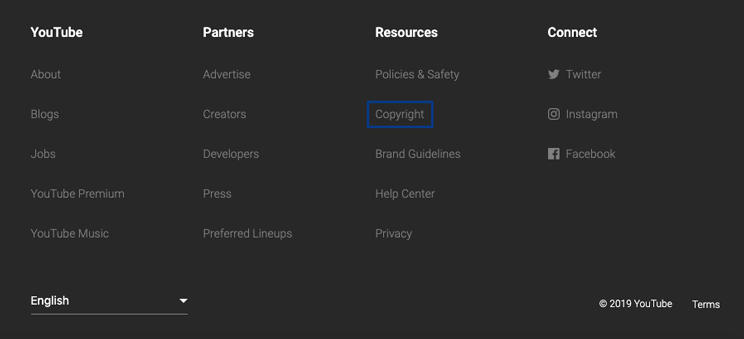Что такое дисклеймер: когда и как его использовать?
Содержание:
- Дисклеймер — что это такое? Что значит «дисклеймер»?
- Disclaimer vs Terms and Conditions, What’s the Difference?
- Confidentiality Disclaimer (for Emails)
- Past Performance Disclaimer
- Fair Use Disclaimer
- What to Include in a Disclaimer?
- disclaimer
- Can You Use a Disclaimer Template?
- Освобождает ли дисклеймер от ответственности
- Disclaimer FAQs
- Fair Use Disclaimer
- Комментарии
- Безответственность в наше время[править]
- What is a Website Disclaimer?
Дисклеймер — что это такое? Что значит «дисклеймер»?
Дисклеймер — что это такое? Что значит «дисклеймер»? Кто знает?
akula_8607/12/2017 22:58
письменный отказ от ответственности за возможные последствия в результате действий человека/организации заявившего данный отказ.
Поделиться с друзьями
Еще интересные вопросы:
Сленг (от англ. slang) — это новые наименования привычных нам слов или наборов слов, которые употребляются разного рода людьми в различных сферах. В целом, сленг – это нестандартная лексика, объединяющая людей одной профессии и/или компании.
В наше время многие из сленговых выражений прочно обосновались в нашем литературном языке и активно используются практически всеми группами людей. Например, «написать шпаргалку» (подсказку, напоминание), «поднять шумиху» (рассказать всем, вынести на всеобщее обозрение), «провалить собеседование» (получить отказ на собеседовании, не получить работу).
Основным отличием сленга, например, от просторечных выражений, является его употребление в своей разговорной речи образованными людьми, людьми сходных профессий, возрастов и т.д. Зачастую именно сленг и определяет принадлежность человека к определенной группе (например, ЗЫ – компьютерный сленг, бабки – уголовный жаргон). Кроме того, в различных групповых кругах сленговые словечки имея одинаковое звучание обозначают совершенно разные вещи (например, ЧПУ – seo, интернет и ЧПУ – заводской станок).
В русском языке также активно используется общий сленг, например, облом, разборки, бабки, тусовка, мент, задолбать, фигня. Это слова, заимствованные в основном из молодежного или уголовного сленга, но ставшие общеупотребимыми и понятными практически всем.
Молодежный сленг
Молодежный сленг обычно употребляется людьми в возрасте 12-25 лет для противопоставления себя системе и родителям. Наиболее часто образование сленговых выражений касается внешности, одежды, самого человека, его жилища и досуга. В основном, создание сленга представляет собой заимствование иностранных слов, сокращение, создание производных выражений, а так же может образовываться от любых ассоциаций относительно объекта. По сути, молодежный сленг – кодовый язык молодежи.
Молодежный сленг самый быстроизменяющийся. И это вполне логично, быстрая смена поколений – свои слова, своё значение.
Примерами такого подросткового сленга являются:
Инет – интернет;
Чикане – чокнутый;
Комп – персональный компьютер;
Задрот – человек-суперпрофи в чем либо, слишком много времени проводящий в совершенствовании своих навыков и не обращающий внимание на реальную жизнь. Например, задрот в компьютерных играх;
Родаки – родители;
Туса – вечеринка, совместное времяпрепровождение в компании;
Хачи – выходцы с кавказа;
Чел – молодой чловек;
Ширка – наркотики, колоться;
2fast4u – слишком быстро для тебя (англ);
ДДшник – игрок наносящий урон другим персонажам компьютерных игр;
Изи – слишком просто (англ);
Арта – танк из игры world of tanks, наносящий огромный урон.
Подростковый сленг и его значение
Не все подростки сознательно используют сленг. Многие употребляют его в шутку и зачастую из-за этого не бывают приняты другими сверстниками. Для подростка употребление сленговых выражений – это игра, кодовый язык, который не способно понимать большинство взрослых и поэтому можно спокойно говорить о чем угодно. В большинстве случаев, по мере взросления молодежный сленг уходит из разговорной речи, и подросток начинает называть вещи своими именами.
Влияние молодежного сленга
В принципе, в использовании сленга нет ничего плохого, когда общение на нем не выходит за рамки и человек при этом понимает различие между общеупотребимой разговорной речью и этим шуточным, кодовым (зачастую временным) языком. Но если из-за непринятия общепринятых норм в переходном возрасте происходит грубый отказ от «нормального» – то это уже проблема.
Все дело в том, что все наши мысли тесно связаны со словом, а не с образом, как у животных. Поэтому используя сленговые выражения, подросток начинает на нем не только говорить, но и думать. В результате сленг просачивается во все сферы его деятельности и укореняется так, что порой ему самому требуется перевод с «нормального» на «его» язык.
Избавиться впоследствии от сленга будет очень тяжело. Но вполне достижимо. И для этого потребуется масса сознательных усилий.
Disclaimer vs Terms and Conditions, What’s the Difference?
It is easy to assume that disclaimer and website terms and conditions are the same things. They are not the same thing, however, and it is important to understand the difference as you are assembling your site.
Rather than attempting to reduce liability through the use of a disclaimer, someone using terms and conditions on a website is laying out a specific framework for rules related to using that site.
For example, some of the items which could be included on a terms and conditions page include the following:
- A structure of the legal relationship between the website owner and site users
- Imposing limitations on the use of the website
- Establishing rules regarding who can legally use the site
- Granting permission to use certain materials which are found on the site
While it is true that there can be some overlap between terms and conditions and disclaimers, they should not be thought of as the same thing.
A disclaimer may be included in the content of a terms and conditions page; however, these are separate issues that should be handled separately as you assemble the legal section of your website.
Confidentiality Disclaimer (for Emails)
Digital communication offers more opportunities for confidential information to be exposed or intercepted. A confidentiality disclaimer states who the message is for, why the recipient should not forward it to others, and who they should contact if they receive the message by mistake.
Confidentiality disclaimers are commonly used in law, education, and healthcare — industries that rely on the transfer of sensitive information. For example, they’re useful in situations where a business needs to ensure attorney–client privilege, safeguard sensitive personal data, or protect private health records.

Past Performance Disclaimer

A past performance disclaimer is one of the simplest disclaimers to add because it only requires a short statement:
«Past performance doesn’t guarantee future results.»
You should use one of these disclaimers whenever you’re working in an area with a degree of risk. In most cases, they’re used on financial sites related to trading, investing, and banking.
If you’re regulated by the SEC, then SEC Rule 156 requires you to tell investors explicitly not to rely on past investment results for future performance.
They’re rarely required on general sites or apps. However, if you’re trading in advice or consulting in any area, it’s worth adding the disclaimer.
Here’s an example from Maple Leaf Funds:

Maple Leaf Funds starts the disclaimer with the standard «Past performance does not guarantee future results.»
The company goes a bit further to note why past performance shouldn’t be relied on, which serves as a more compelling reason for consumers to avoid doing so.
Fair Use Disclaimer
If your site or app uses content from other sources, you need to include a fair use disclaimer to prevent your business from being accused of copyright infringement.
Under the principle of fair use, copyrighted works can be used in certain circumstances without the permission of the copyright owner.
According to :
To protect your business from copyright infringement claims, follow these steps:
- State that your site may contain content not authorized for use by its owner
- Explain how your use of this material falls under the guidelines of fair use (e.g., comment)
- Link to Section 107 of the Copyright Act
Here’s an example of a fair use–copyright disclaimer from a YouTube video that meets these requirements:

You can defend your use of original content with similar disclaimer language, based on the category of fair use you are using copyrighted work under, and any applicable licences.
To present its fair use guidelines, YouTube includes a link to a copyright resource in its site footer:

In these guidelines, YouTube includes a copyright and fair use disclaimer explaining that it receives a lot of takedown requests under copyright law, and that it strives to protect creators.
If your website or app relies on content created by others, you can learn from YouTube’s open and accessible approach to fair use to build trust with your users.
What to Include in a Disclaimer?
The content that should be included in a disclaimer is going to depend greatly on the type of website you own. It is impossible to say exactly what should be included in each and every website disclaimer because sites come in all different shapes and sizes.
The best disclaimer is the one that fits the needs of your business perfectly.
With that said, there are a few things which you should consider including in your disclaimer, provided that they match up with the content and purpose of your site.
Identify the rights you want to protect
As mentioned earlier, a disclaimer helps protect your ownership over your intellectual property. A disclaimer that states your ownership over your work dissuades theft of such work, and at the same time, protects you from accusations that such work was copied or stolen.
Identify areas where you might be subject to liability
You are exposing yourself to legal liability, whether it is through selling goods or services or publishing information on a website. For instance, someone could get hurt when using your product, or someone could misconstrue information posted on your website.
When making a disclaimer, try to think of the possible scenarios that could expose you to legal liability. A disclaimer should contain all areas of potential risk that you can identify.
Here are some points that your disclaimer may contain:
Inform your readers that your content is merely an opinion
Over the past few years, there has been a steady growth in litigation over online content, and most of these suits are grounded on defamation. Protect yourself from criminal charges by making the readers of your website or blog aware that its content is merely an opinion and not fact.
Warn your readers against potential mistakes on your website
You should also consider including a disclaimer over the accuracy of the information on your website. Otherwise, errors in the information you publish, even if unintentional, could expose yourself to legal liability.
Inform your readers that your content is not professional advice
When publishing information, professionals usually add a disclaimer to say that their content is only informational and cannot be construed as professional advice. After all, this kind of advice can be given only after a personal consultation with a professional.
This means that readers who act on the information on the website do so at their own risk.
Disclaim third-party actions or content
If your business entails dealing with third parties, aside from your customers or clients, you may want to consider limiting your liability for the actions or errors of such third parties.
When you are using websites or social media platforms, this form of disclaimer is also useful. Website or social media accounts may have features that enable comments, user submissions, advertisements, or any form of third-party content.
disclaimer
1 disclaimer
2 disclaimer
3 disclaimer
4 disclaimer
отказ ревизора от ответственности disclaimer дискламация
юр. отказ (от права на что-л.)
отрицание, непризнание (иска, права)
письменный отказ от пункта формулы изобретения
письменный отказ от формулы изобретения disclamation: disclamation =disclaimer
by deed concerning succession to property письменный отказ от наследования имущества
in bankruptcy отказ от признания банкротства
of estate liability отказ от имущественной ответственности
of inheritance отказ от наследства
of liability отказ от обязательства
5 disclaimer
6 disclaimer
7 disclaimer
8 disclaimer
9 disclaimer
10 disclaimer
11 disclaimer
Buyers shall always accept a bill of lading claused «said to contain … bags» or «shippers load and count» or similar disclaimer, but sellers shall be responsible for any difference in the number of bags invoiced and the number of bags which arrive. — Покупатели должны всегда принимать транспортную накладную, содержащую оговорки «со слов содержит … мешков» «погрузка и подсчет грузоотправителем» или тому подобную дискламацию (оговорку), но продавцы должны нести ответственность за различие в количестве мешков, указанных в счете-фактуре и реально прибывших.
12 disclaimer
13 disclaimer
The company asserts in a disclaimer that it won’t be held responsible for the accuracy of information. — В разъяснительном замечании компания предупреждает, что она отказывается нести ответственность за точность информации.
14 disclaimer
15 disclaimer
16 disclaimer
17 disclaimer
18 disclaimer
19 disclaimer
20 disclaimer
См. также в других словарях:
Disclaimer II — Studio album by Seether Released June 15, 2004 … Wikipedia
Disclaimer II — Saltar a navegación, búsqueda Disclaimer II Álbum de Seether Publicación 15 de junio del 2004 Género(s) Har … Wikipedia Español
disclaimer — dis‧claim‧er noun LAW a statement that you are not responsible for something or not connected with it: • a case concerned with a disclaimer of liability in a surveyor s report * * * disclaimer UK US /dɪsˈkleɪmər/… … Financial and business terms
Disclaimer II — est une compilation du groupe Seether sorti en 2004, c est un réenregistrement de l album Disclaimer I avec des pistes supplémentaires. Liste des chansons Gasoline 2:48 69 Tea 3:32 Fine Again 4:05 Needles 3:27 Driven Under 4:33 Pride 4:07… … Wikipédia en Français
disclaimer — (n.) denial of a claim, mid 15c., from Anglo Fr. disclaimer disavowal, denial; see DISCLAIM (Cf. disclaim). Infinitive used as a noun in Old French. Cf. WAIVER (Cf. waiver), etc … Etymology dictionary
Disclaimer — Dis*claim er, n. 1. One who disclaims, disowns, or renounces. 2. (Law) A denial, disavowal, or renunciation, as of a title, claim, interest, estate, or trust; relinquishment or waiver of an interest or estate. Burrill. [1913… … The Collaborative International Dictionary of English
disclaimer — repudiation abjuration, abnegation, clause, denial, disavowal, dissociation, renunciation, retraction, waiver; concept 45 … New thesaurus
disclaimer — ► NOUN a statement disclaiming something, especially responsibility … English terms dictionary
disclaimer — n. 1. a disclaiming; denial or renunciation, as of a claim, title, etc. 2. a refusal to accept responsibility; disavowal … English World dictionary
Can You Use a Disclaimer Template?
Again here, the answer is no. You may wish to use a generic template to get started on the process of writing your disclaimer, but simply “filling in the blanks” on a template is not going to get the job done.
The person who created the template cannot possibly know all the ins and outs of your website, so that template may fall short in important areas.
As a better alternative, consider creating a disclaimer with the help of our easy to use website disclaimer generator. It will use your own responses to create a custom disclaimer tailored specifically to your needs which can be used on your website right away.
Don’t waste time writing legal documents. Create an attorney-drafted disclaimer in just a few minutes with our online generator and avoid costly mistakes.
Освобождает ли дисклеймер от ответственности
В странах с германо-романской правовой моделью сам по себе дисклеймер не несет должной юридической силы, чтобы предопределить судебный процесс. Дисклеймер способен только снизить юридические риски в совокупности с другими инструментами.
В англо-саксонской модели, примером которой является США, наличие дисклеймера может стать основанием для освобождения от ответственности. Такое предупреждение означает, что лицо осознало все риски, о которых его предупреждали, и сознательно пошло на противоправное деяние.
Наличие предупреждения не сможет освободить от ответственности в России. Достаточно вспомнить, что в России можно получить реальный уголовный срок за простой репост записи, которая является экстремистской и нарушающей закон. Даже если автор укажет, что он не согласен со сведениями в записи, его могут признать виновным в распространении экстремистских материалов.
Не имеют юридической силы дисклеймеры, которые часто указывает администрация магазина – «Администрация не несет ответственности за оставленные вещи». На самом деле в
ст. 902 Гражданского кодекса
это предупреждение отвергается, как неправовое. При безвозмездном хранении вещей магазин несет ответственность в размере стоимости вещей при их краже или недосдаче.
Таким образом, под дисклеймером понимается отказ от определенных обязательств и от ответственности за последствия действий третьих лиц. В России дисклеймер часто встречается в онлайн-среде: он распространен среди владельцев сайтов, авторов статей и блогеров. На самом деле дисклеймер в России – простая формальность и не освобождает от ответственности.
Юрист-консультант общей практики
Disclaimer FAQs
If you’re looking for more answers, here are some frequently asked questions about disclaimers:
Do I Need a Disclaimer?
Yes, you need a disclaimer to protect your website against legal liability. Disclaimers inform users that your site will not be held responsible for any damages suffered from using your site.
For example, if you run a legal blog, a legal disclaimer will tell users that your content should not be taken as legal advice, and your site will not be held accountable for any legal actions the reader may take.
Whether you run an ecommerce site, blog, app, or general website, you need a disclaimer (or multiple disclaimers) to be transparent with users and protect yourself against legal claims.
Where Do I Put My Disclaimer?
Put your disclaimer where users can easily find it. You can put your disclaimer or disclaimers on a separate page, then link to that page in your website menu, website footer, or impressum page if you have one.
You should also put your disclaimers on relevant content. For example, if you promote an Amazon product in a blog post through the Amazon Affiliates program, you need to add an Amazon Affiliates disclaimer to that blog post.
What Types of Disclaimers Are There?
There are many types of disclaimers that address liabilities for different industries, activities, and content. The most common types of disclaimers are:
- Fair Use Disclaimer: A fair use disclaimer discloses that you are using copyrighted materials on your website lawfully and with the appropriate permissions.
- Warranty Disclaimer: Warranty disclaimers explain that sellers and service providers are not responsible for possible product or service failures.
- Copyright Disclaimer: A copyright disclaimer lets site visitors know that your site contains copyrighted material.
- No Responsibility Disclaimer: No responsibility disclaimers inform users that you are not responsible for the actions they take based on content found on your website.
- Confidentiality Disclaimer: Confidentiality disclaimers assure users that some content, such as contact information, is only intended to be seen by certain parties.
- Affiliate Disclaimer: Affiliate disclaimers disclose your participation in an affiliate program, such as Amazon Associates.
- YouTube Disclaimer: YouTube disclaimers are any disclaimer found in the video description of a YouTube video. Commonly, copyright disclaimers and no responsibility disclaimers double as YouTube disclaimers.
- Views Expressed Disclaimer: Views expressed disclaimers specify that the opinions found on your website are not the views or opinions of your business.
- Investment Disclaimer: An investment disclaimer informs readers that your investments commentary is information, and should not be taken as official investment advice.
- No Guarantee Disclaimer: No guarantee disclaimers announce that your website or business makes no promises about the results of a product or service.
- Use at Your Own Risk Disclaimer: Use at your own risk disclaimers instruct your site’s visitors to act on your content or recommendations at their own risk.
- Email Disclaimer: An email disclaimer is any disclaimer added to the footer of an email. Most often, confidentiality disclaimers act as email disclaimers.
- Past Performance Disclaimer: Past performance disclaimers state that previous results do not equal future results.
- Medical Disclaimer: A medical disclaimer informs users that the content on the site is provided for informational purposes only, and does not substitute professional medical advice.
How Do I Write a Disclaimer?
You can write a disclaimer by modifying a disclaimer template to address any liabilities you have on your site.
Using a disclaimer template will make it easy for you to pick and choose the disclaimers that may apply to your website, and then customize those disclaimers to include any information unique to your site.
Additional FAQs
- Does a disclaimer need to be notarized?
- Where do you put a disclaimer?
- What should a disclaimer include?
- What is a confidentiality disclaimer?
- How do you write a legal disclaimer?
- Do I need a disclaimer for my mom blog?
Fair Use Disclaimer
If your site or app uses content from other sources, you need to include a fair use disclaimer to prevent your business from being accused of copyright infringement.
Under the principle of fair use, copyrighted works can be used in certain circumstances without the permission of the copyright owner.
According to :
To protect your business from copyright infringement claims, follow these steps:
- State that your site may contain content not authorized for use by its owner
- Explain how your use of this material falls under the guidelines of fair use (e.g., comment)
- Link to Section 107 of the Copyright Act
Here’s an example of a fair use–copyright disclaimer from a YouTube video that meets these requirements:

You can defend your use of original content with similar disclaimer language, based on the category of fair use you are using copyrighted work under, and any applicable licences.
To present its fair use guidelines, YouTube includes a link to a copyright resource in its site footer:

In these guidelines, YouTube includes a copyright and fair use disclaimer explaining that it receives a lot of takedown requests under copyright law, and that it strives to protect creators.
If your website or app relies on content created by others, you can learn from YouTube’s open and accessible approach to fair use to build trust with your users.
Комментарии
Мы оставляем за собой право удалять любые комментарии, которые не соответствуют нашим правилам комментирования блогов, приведенным ниже. К ним относятся комментарии, которые используют ненормативную лексику, оскорбляют других участников или представителей администрации сайта, имеют аффилированные ссылки на сомнительные ресурсы, прямо или косвенно влияют на репутацию конкретной персоны, фирмы, сайта.
Наконец, мы вправе заблокировать пользователя, если он распространяет через комментирование спам или пишет не связанные с темой и местом комментарии, или нарушает иные стандарты, условия использования любую иную политику регулирующую этот сайт.
Правила комментирования блога
Мы безусловно рады, что вы решили оставить комментарий к одному из наших информационных материалов, возможно поделится своим мнением или опытом, высказать критику в адрес автора или указать на неточность, мы всячески это поддерживаем.
Но вы должны понимать, что ваш комментарий будут видеть другие пользователи, поэтому мы просим вас соблюдать правила, изложенные ниже,чтобы сохранить положительный опыт для всех наших читателей. Отправляя комментарии к статье, вы соглашаетесь со следующими правилами:
-
Вы соглашаетесь с тем, что несете полную ответственность за размещаемый вами контент. Вы не можете публиковать контент, который является клеветническим, дискредитирующим, непристойным, оскорбительным, нарушает право третьей стороны на неприкосновенность частной жизни, иным образом нарушает любое применимое местное, государственное, национальное или международное законодательство или иным образом неуместен.
-
Кроме того, вы не можете публиковать контент, унижающий других по признаку пола, расы, класса, этнической принадлежности, национального происхождения, религии, сексуальных предпочтений, инвалидности или другой классификации. Язык, предназначенный для запугивания или подстрекательства к насилию, недопустим.
-
Вы понимаете и соглашаетесь с тем, что модераторы могут изменять содержание ваших комментариев. Мы всегда отслеживаем пользовательский контент и оставляем за собой право удалять, редактировать или иным образом изменять контент, который он считает неуместным по любой причине.
-
Вы понимаете и соглашаетесь с тем, что комментарии должны использоваться только в некоммерческих целях. Запрещены любые действия по привлечению средств, продвижению коммерческих организаций или иным образом вовлечению в коммерческую деятельность через функцию комментариев.
Безответственность в наше время[править]
Дисклеймер предупреждает
Так как ответственность, а равно и освобождение от оной, требует ответственного отношения и не терпит безответственности, выдача индульгенций-дисклеймеров во взята под контроль мафии, бездельничающих ренегатов или, изредка, государства.
Так, в России, Внешней Монголии и на континентальной части Старой Доброй Зеландии производством дисклеймеров занимаются все, кому не лень. Эти трое не знакомы друг с другом, к тому же их держат за яйца Спортлото и антимонопольный комитет, поэтому тут всё чисто.
Совсем не так дела обстоят в Калифорнии (стране, где расположены сервера Абсурдопедии) и . Там (или тут — в зависимости от того, в дурдоме какого государства вас сейчас держат) на выдачу освобождений от ответственности существует монополия.
Все без исключения легитимные дисклеймеры имеют собственноручный отпечаток восьмого (с конца) правого нижнего пальца Чака Норриса, как единственного из ныне живущих, кто может разрешить Богу и присным частично делигировать свои полномочия и гарантировать (под страхом удара ногой с разворота) уважение к дисклеймеру со стороны конечных пользователей продукта или услуги. Региональным калифорнийским представителем Чака Норриса, уполномоченным выдавать интеллектуальные индульгенции, является Губернатор-Чебуратор.
What is a Website Disclaimer?
A disclaimer is a notice which is placed on your website in an effort to limit your liability for the outcome of the use of your site. Even if you haven’t thought much about them previously, you have certainly seen disclaimers all over the web. Nearly every website has one in place, and you should as well.
While a disclaimer certainly can’t rule out the possibility of legal action taking place at some point in the future, it can go a long way toward protecting your best interests.
So what kinds of website elements can be covered by a disclaimer? The content on your website is usually the first place to start. Even if you make every effort to confirm the accuracy of the information you have placed on your site, it is always possible that some of the information on your pages may be inaccurate.
If a website user can prove that this incorrect information has harmed them in some way, you could potentially be found liable in court. However, if you had an appropriate disclaimer in place to cover the content of your site, you may be able to successfully argue that you are not liable.
Beyond content, other pieces of your site that could be covered by a disclaimer include potential copyright issues, the transmission of viruses, and more. Technically, just about anything you place on your site can be addressed through the use of a disclaimer.
As you prepare to take your site live onto the web, it is wise to think through everything you are publishing and consider placing a disclaimer on anything that you feel may open you up to a lawsuit in the future.
It does need to be highlighted that the use of a disclaimer does not in any way eliminate the possibility of a lawsuit. Anyone can file a lawsuit at any time for any reason, whether you have a disclaimer in place or not.
It will be up to the courts to determine the validity of a lawsuit that has been levied against you, which is where a quality disclaimer could come into the picture. If a court determines that your disclaimers do, in fact, cover the items in question in the lawsuit, you may be protected from liability.









